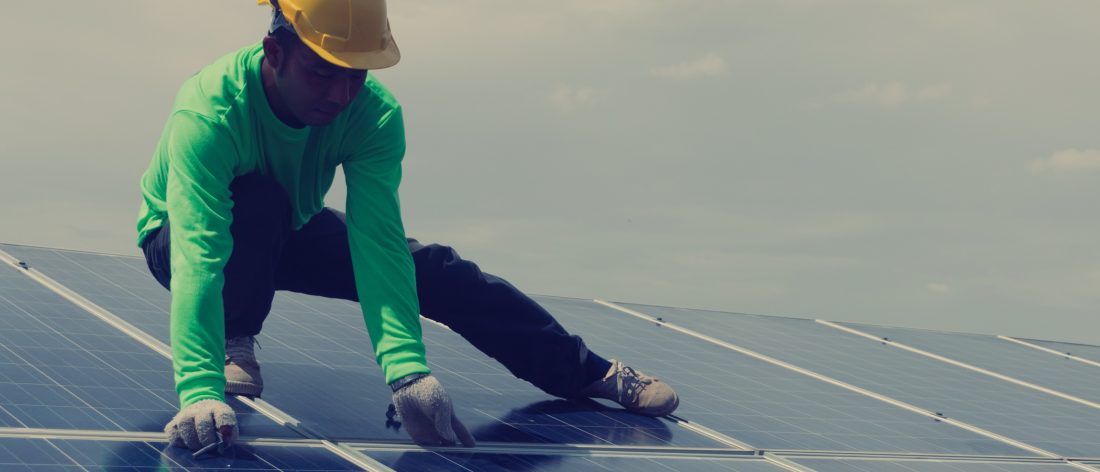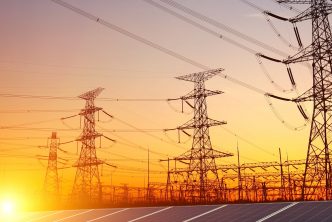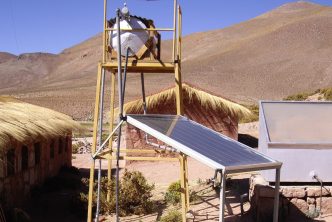Effects of an additional 5 million connections
Among other objectives, the Nigeria Economic Sustainability Plan (NESP) seeks to “undertake growth-enhancing and job-creating infrastructural investments in roads, bridges, solar power, and communication technologies; promote manufacturing and local production at all levels.” The NESP – which has the Vice President chairing the Economic Stability Committee, leading the overall strategic vision, policy direction and general oversight of implementation – “advocates the use of Made-in-Nigeria goods and services as a way of creating job opportunities, achieving self-sufficiency in critical sectors of our economy and curbing unnecessary demand for foreign exchange which might put pressure on the exchange rate.” The Plan also advocates pro-poor spending.
A vital project of the NESP, in aid of the foregoing objectives, is the Installation of Solar Home Systems. The proposed Solar Home Systems Project “will cover up to 5 million households, serving about 25 million individual Nigerians who are currently not connected to the National Grid.” The programme is designed to attract operators’ participation along the off-grid solar power value chain, from marketing and distribution companies to assemblers and manufacturers. This, critically, is how the NESP seeks to retain and create the target new jobs within the local economy
The Vice President is responsible for providing the overall strategic vision, policy direction, and general oversight of the implementation of the NESP through the instruments of the Economic Sustainability Committee and the National Economic Council under his chairmanship.
By design, the programme for installing 5 million connections delivers on the multiple objectives of accelerating national electricity access while incentivizing incremental local assembly and manufacturing. The resultant effect of which is the creation of 250,000 jobs and the knock-on effect of indirect jobs and socio-economic benefits of those operations along the value chain. The programme also significantly impacts payment services as rural electrification hitherto continues to incentivize additional investments in the last-mile infrastructure necessary to collect energy payments and pre-agreed periodic instalments for the solar energy equipment in these remote communities.
To put some context to the Nigerian electricity access gap: CrossBoundary Research estimates that 81 million people are without power in Nigeria. Another 40 million is said to be without access to reliable power. This means that Nigeria is home to one-in-five of the 560 million people without electricity in sub-Saharan Africa as of 2019, according to the Africa Energy Outlook Report of the International Energy Agency.
Rolling back this challenge and closing the electrification gaps calls for a decisive effort on a scale as the Nigerian government has embarked upon. Indeed, the programme complements the Nigeria Electrification Project (NEP), an ongoing $550 million programme of the federal government financed by the World Bank and African Development Bank (AfDB) and implemented by the Nigerian Rural Electrification Agency (REA). The NEP draws on private sector participation by providing a performance- and output-based grant as a capital subsidy to enhance the commercial viability of the Project and reduce tariffs for end-users. As is the 5 Million Solar Connections Programme, the Project furthers the Rural Electrification Strategy and Implementation Plan (RESIP) designed around mini-grids and solar home systems.
Attaining this target calls for new electricity connections of between 500,000 to 800,000 households per year. The connections are expected to mix the extension of the national grid, mini-grids, and solar home systems. However, with operators in the Nigerian electricity service industry under the current strain, more focus has been on reducing losses and improving collections in new connections through grid extension as the traditional means of delivery access to our communities. It stands to reason, therefore, that alternative means of delivering access will have to be explored. Therein lies the case for mini-grids and solar homes systems if Nigeria must make progress in bringing down the proportion of its people without electricity access, most of which are in the rural communities.
Offgrid Electrification: Minigrid and SHS as Options
Nigeria has a large population, significant parts of which are in rural or dispersed, remote locations. The national electrification rate of 55{1c02100822988c48c7b0a484ab61ac3d7f398d67c2f66594d88b2db33072d9d9} falls lower to 39{1c02100822988c48c7b0a484ab61ac3d7f398d67c2f66594d88b2db33072d9d9} in rural areas. For more context, the Nigeria power sector is now mostly private sector-driven following its unbundling with the critical national grid for the transmission of power remaining a government-owned monopoly. The prevailing reality is a power sector under significant strain resulting from a combination of high technical and commercial losses, in addition to cost recovery, which incentivized little to no investments by way of enhancing capacity and delivering new connections. It is against this reality that Nigeria aspires to achieve universal access to electricity for its people by 2030.
Using geospatial tools, government data on population clusters and load centres estimates that up to 8,000 such centres or about 14{1c02100822988c48c7b0a484ab61ac3d7f398d67c2f66594d88b2db33072d9d9} of the population can be effectively served with mini-grids. This is at the core of an effective off-grid electrification programme. In furtherance of this outlook, and in aid of the 5 Million Connections Programme, the Sustainable Energy for All (SEforALL) is also sponsoring the development of a project-level geospatial model for qualifying off-grid communities under the programme. A key output of the effort is data-enabled geolocated communities of an estimated 7 million Nigerians ready to engage prospective private sector investments under the programme, providing leverage on some critical risky early-stage project development for investors.
Distributed power, in this case via solar photovoltaic mini-grid (and its lower capacity comparative- solar home systems), is relatively easier and faster to deploy in such locations compared to the traditional grid extension route. Also, because the mini-grids are located and generate power next to load points, they provide immediate power of sustained reliability with effective ownership, proper operations, and maintenance practices. This is hardly the case today in many communities where, although connected to the national grid, go for months on end without electricity supply due to transmission and distribution equipment challenges.
The 5 Million Connections Programme as an Accelerator
As stated earlier, the 5 Million programme is a mass electrification initiative to close the aforementioned gap by extending electricity to the underserved urban and rural population through financing for the private sector-led deployment of Tier 1-4 SHS equipment, mini-grid and interconnected mini-grid projects. The programme is enabled by a N140 billion dedicated intervention financed by the Central Bank of Nigeria for eligible operators in the off-grid electrification value chain. This includes marketers/distributors and assemblers/manufacturers, providing working capital and term loans for qualifying businesses.
Eligible marketers and distributors are operators and businesses involved in distributing SHS units, constructing and managing mini-grid sites. Simultaneously, assemblers and manufacturers are companies with local manufacturing and assembly operations centred around off-grid components such as solar PV panels, batteries, appliances, packaging, etc. Vertically-integrated companies straddling these components are invited to submit their applications in either or both segments as appropriate, furthering their business and the programme’s overall objectives.
Some measures also support the programme. These measures include access to the CBN foreign exchange window for assemblers and manufacturers, targeted import duty exemptions, and capital subsidies via the World Bank- and African Development Bank-financed NEP.
Critically, the programme has received support from the US Agency for International Development (USAID) Power Africa Nigeria Power Sector Program (PA-NPSP) for the design and implementation plan, alongside the Office of the Vice President. Since the approval of the Vice President, the Foreign and Commonwealth Development Office (FCDO) has also made proposals to the REA for their support of the implementation of the programme via Manufacturing Africa, the UK-Nigeria Infrastructure Advisory Facility (UKNIAF), and the Africa Clean Energy Technical Assistance Facility (ACE TAF). SEforALL has facilitated the aforementioned geospatial data in what is expected to be the first part of such enabling model, not just for the 5 Million Connection Programme but the REA-proposed framework for a universal off-grid electrification model and data repository.
Overall, Nigeria’s electrification gap remains a critical agenda item of the government. It has demonstrated its policy and funding support via the 5 Million Connections Programmes, NEP, and the Rural Electrification Fund’s ongoing programs. While the programme is designed to deliver on the NESP objectives of increased local content and job retention/creation via assembly, manufacturing, marketing, distribution, and payment services, it is also intended to be equally as impactful in delivering the headline 5 million new electricity connections for up to 25 million Nigerians. The private sector is integral to the implementation of the programme. The belief is that government policy and the enabling intervention financing provide the requisite incentives to pick up the pace on delivering sustainable electricity to the Nigerian people.







